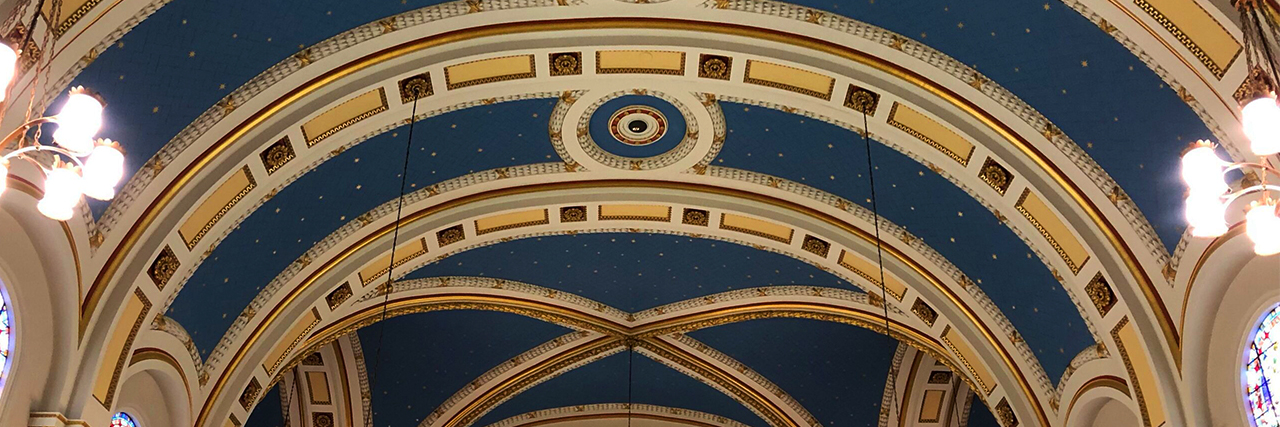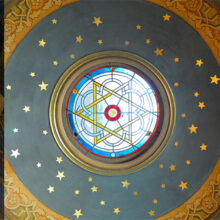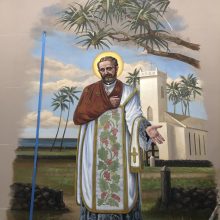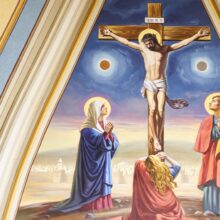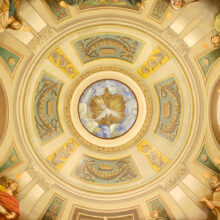You heavens, bless the Lord…Sun and moon, bless the Lord.
Stars of heaven, bless the Lord…Blessed are you, Lord, in the firmament of heaven…
– Psalter, Sunday Week 1, Morning/Canticle/Daniel 3:57 – 88
In what has been a time of great darkness, we are all seeking glimmers of light. If we find ourselves doing so in the night sky, we are in very good company. To stargaze is, in a way, to travel. We look back in time as light reaches us from distant space; in a poetic way we are united to all of humanity, past, present, and future, who have/are now/ will one day, wonder at the firmament; and we are joined with all the voyagers of sea and land who have navigated the earth by following the stars.
The Feast of the Epiphany (January 6th) is the twelfth and final day of the Christmas season, the celebration of the arrival of the most well-known star-followers, the Magi. These Kings of the East were not Israelites, they signify the gentile world, to whom salvific grace is extended. Light in the night sky drew these wise ones to the Christ child. The gifts they bore reveal the infant’s identity to us: Frankincense, signifying priesthood; myrrh, foretelling suffering and death; and gold, emblematic of kingship and the eternal nature of Christ’s Kingdom. The Christmas season begins with the Feast of Christmas and culminates with Epiphany. Christmas celebrates the hidden God of the Israelites becoming man; Epiphany marks that the Kingdom is for everyone.
“They were overjoyed at seeing the star, and on entering the house they saw the child with Mary his mother.”
– Matthew 2:10
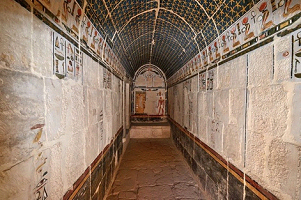

Looking to the sky as the realm of the divine is ancient and shared across cultures the world over. Texts of the Torah, oral traditions of first nations, and visual representations of ancient Egyptians, all make use of celestial imagery to communicate matters of faith. Long before the star appeared to the Magi, celestial representations have graced the ceilings of sacred structures. A wonderful example dating 15 centuries before Christ is the Mortuary Temple of Queen Hatshepsut in Thebes, whose wonders include a ceiling blanketed with stars. The transcendent 6th Century San Vitale in Ravenna, Italy is one of countless holy sites in Christendom adorned with stars.
In the spring of 2020, as the COVID-19 lockdown began, EverGreene artists were participating in the ancient tradition of depicting the expansive heavens, on the ceiling of St. Augustine Catholic Church in Covington Kentucky. The Very Reverend Daniel L. Schomaker, pastor of St. Augustine, who led the renewal of the historic church, had long envisioned the celestial motif. As the liturgical calendar brings our attention to the stars, I asked Fr. Schomaker to be our guide in understanding the significance of stars in a liturgical setting. “Jesus is king of the universe. How do we know our place in the universe but when we stare into the night sky?” Reflected Fr. Schomaker. “When you look at the heavens you realize how small you are, and yet in the midst of the tininess, you are important. God knows you better than you know yourself, the good, the bad, and the ugly; and loves you.”
Drawing Us Into God
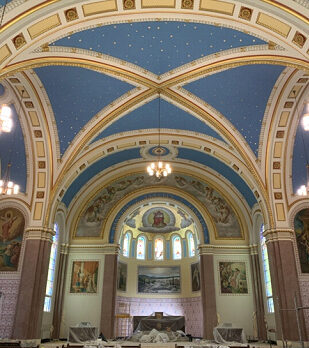
Well-designed ecclesiastical artistry is never mere decoration, it serves to invite us into the mysteries of faith. Fr. Schomaker shared “One of my favorite moments in admiring the ceiling is not when I am looking up, it’s when I am consecrating the host when I am speaking the words of institution, the ceiling is reflected in the paten. There’s an aspect of the incarnation in that moment. When offering the Holy Mass, here is Jesus taking the form of bread and wine, as I as a priest, say the prayers.”
To be participate in the heavenly liturgy with the stars above hints at three integrally related Christian mysteries:
Creation, when God created the natural world, symbolized by separation of the light from the darkness.
Salvation, heaven, is often symbolized by the reinstatement of the garden.
Incarnation, manifestation of the hidden God in the person of Jesus, signified by the star of Bethlehem.
“Jesus became incarnate to draw us into God,” explains Fr. Schomaker. “The Incarnational mystery is about putting on flesh. That relates to the building. Humans are body and soul, physical and spiritual. We need to be surrounded by things that are holy, to be drawn in through physical things, sacramental things. Look ahead to Easter. On Good Friday the altar is stripped bare, and then we dress the altar with candles, and flowers, and clothes. The church is the body, and the building gets dressed up with different colors and ornamentation.”
These sacramental things help nurture the faithful along a pilgrimage in which they are entrusted with sharing the light of Christ through their lives. EverGreene is overjoyed to have worked with Fr. Daniel Schomaker, Fr. Jordan Hainsey, Rizzo Brothers, and Ratigan-Schottler to dress St. Augustine up in celebration of the parish’s 150th Anniversary! We are humbled imagining all the souls who will pray beneath the stars at St. Augustine over the next 150 years.
Authored by Emily Sottile, Director of Sacred Space Studio with commentary by the Very Reverend Daniel L. Schomaker.
The Very Reverend Daniel L. Schomaker serves the Diocese of Covington as Vicar General, Moderator of the Curia, Pastor of St. Augustine Parish, Assistant Director of Seminarians, and Vicar for Episcopal Ceremonies.
Be sure to check out our Under the Same Starry Sky post to see examples of starry ceilings at Eldridge Street Synagogue, Grace Church, and atmospheric theaters!
